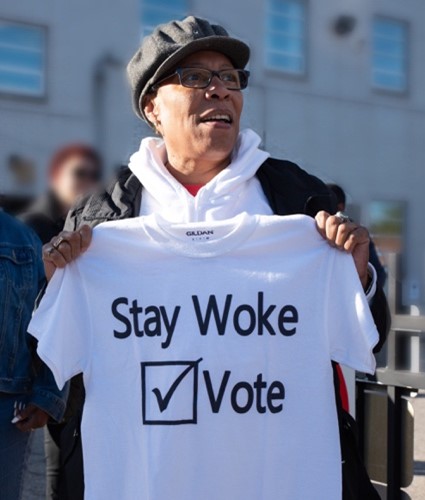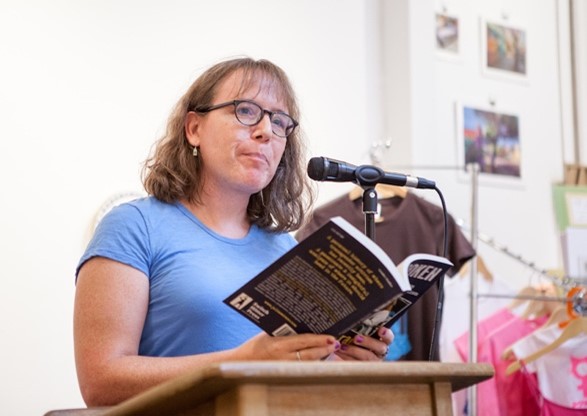By Soufyane Badreddine
“If I am […] the loose thread that unravels the gender of everyone around me, then I am going to pull, and pull […]”
W.E.B du Bois tells us in his 1905 discerning book The Souls of Black Folks, that a person victim of continuous discrimination will eventually start thinking of themselves as a problem. Being woke is being able to pin down and understand the discriminations allowing for continuous oppression and social injustice. But what happens when being woke tips the balance over and becomes the oppressing device?
Being Woke
The term woke emerged in the 1930’s among African American communities. At the time it referred to being aware of systems of oppression affecting black Americans. Since then, its definition broadened to refer to an acute awareness of social injustice such as racism, sexism, homophobia, ageism and so on.

In 2010 wokeness gained new momentum and since then has found itself regularly included within political agendas of both Liberal and Conservative parties. Additionally, with the help of social media, the concept quickly exported itself outside America. Today, different states adopt explicit and/or ambiguous and changing stances on the topic. For example, Chatterton Williams reports that France sees wokeness as potentially dangerous because validating individuals’ feelings over facts and prompting to an Americanisation of knowledge. Others, like the United Kingdom harnessed the growing resentment by commissioning a study on race and ethnic disparities to ensure that no matter one’s gender, sexuality, background and religion they could pretend to equal social opportunities.
Gender Identity and Wokeness
Gender identity is one’s perception of their gender or the gender a person feels they are. For some, the felt gender identity does not match their sex. Cook’s book straightforwardly titled Gender Identity provides an accessible introduction to the subject.
Beyond the male and female binary, several other genders do exist. Those can allow individuals to articulate their identity in all its complexity. Some of those genders are, intersex, transgender, non-binary, queer and more. Nonetheless, expectations on the alignment of individuals’ sex, gender identity, and sexual orientation remain. For example, an individual born with a penis will be expected to embody a male gender identity and be attracted to female individuals.
Wokeness seems to allow individuals to reflect on their gender identity, its embodiment, and the effects it has on themselves and others. This reflexive exercise can help individuals let go of harmful gender constructions and adopt one they feel is most suited.
Whilst a progressive understanding of gender identities helps oppressed individuals to find a space in which to exist as Talia Mae Bettcher expresses in an enlightening article called Trapped in the Wrong Theory, for some this conception is a synonym of disorientation. Whitehead in his book, cleverly titled Toxic Masculinity, sees the progressive conceptualisations of gender identities, and more specifically male gender identities, as the premise of a gender crisis. A crisis demanding individuals and societies to review what they think of as natural truths.
Woke Bullying
As suggested above being woke in terms of gender identity has its good sides. However, it sometimes proves to be counterproductive.
Andrew Cusack in a piece exploring the vulnerability of the woke agenda in the UK brings forward the case of the Great Ormond Street Hospital and the Northeast London Foundation NHS Trust. The London-based hospital and NHS trust co-organised in 2022 an online seminar aimed at child psychiatrist trainees with for topic, how to best treat children experiencing gender dysphoria. This event saw three of the invited psychiatrists dis-invited as some of their views, namely the advocacy of science-based education around gender in schools and evidence-based care for children diagnosticated with gender dysphoria, weren’t received well by the trainees. Those trainees argued that with psychiatrists holding these stances on knowledge, there was no possible way that LGBTQ+ individuals present during the seminar would feel comfortable.
Getting rid of somebody’s expertise based on their stance seems as though wokeness bites its tail by discriminating against people with views that, until criminalised, remain valid.
Wokeness despite its well-intentioned idea of departure needs to be understood as inflammable. Its instability can prompt counterproductive ways of conceptualising gender identities as well as many other aspects of one’s identity.
Pulling the Loose Threads

Additionally, it seems that individuals as well as institutions aiming to adopt a woke approach to the world expose themselves to pressures and bullying from below as Cusack puts it. These approaches appear to push rationality and diversity out of the equation whilst forcing decision making that favour some over others and, in a sense, (re)produce inequalities elsewhere.
Finally, on both, societal and individual levels being critical or as Serano puts it pulling the loose threads of polarizing positionings seems essential to societies striving to efficiently tackle systemic inequalities.
References:
Bettcher, T, M. (2014) ‘Trapped in the Wrong Theory: Rethinking Trans Oppression and Resistance’, Signs, Issue 39.2, 383-406.
Burch, J (2022) ‘Woke (concept)’, Salem Press Encyclopaedia, viewed 19 March 2023, https://search.ebscohost.com/login.aspx?direct=true&db=ers&AN=155219884&site=eds-live&scope=site
Cook, M (2019) Gender Identity: Beyond Pronouns and Bathrooms, Nomad Press, Ashland.
Cusack, A. (2022) ‘Letter from London: The Vulnerability of the Woke Agenda’, Quadrant, Issue 588. 20-22.
Du Bois, W,E,B. (2002) The Souls of Black Folks. McLean, Virginia: IndyPublish.com. Manchester organisation
Figure 1. Wikimedia Commons (2018) Marcia Fudge with Stay Woke Vote t-shirt in 2018. Available at: https://commons.wikimedia.org/w/index.php?search=marcia+fudge&title=Special:MediaSearch&go=Go&type=image (19/03/23).
Figure 2. Sosis, C. (2020) What is it Like to Be a Philosopher. Available at: http://www.whatisitliketobeaphilosopher.com/talia-mae-bettcher (Accessed: 19/03/23).
Figure 3. Gethen, A, P (2017) Julia Serano reads from her book “Outspoken” during the “TransAction: Trans Writing as Activism” event in San Francisco. (Accessed: 21/03/23)
Julia Serano (2016) Cocky. 28/04/2016. Available at: https://www.youtube.com/watch?v=GA0b8gPtkdc&t=123 (Accessed: 19/03/2023).
Policy Paper (2022) Inclusive Britain: government response to the Commission on Race and Ethnic Disparities (CP 625). Available at: https://www.gov.uk/government/publications/inclusive-britain-action-plan-government-response-to-the-commission-on-race-and-ethnic-disparities/inclusive-britain-government-response-to-the-commission-on-race-and-ethnic-disparities (Accessed: 19/03/23).
ROSEN, C. (2018) ‘The Woke Warriors’, Commentary, 145(2), pp. 7–9. Available at: https://search.ebscohost.com/login.aspx?direct=true&db=hlh&AN=127611478&site=eds-live&scope=site (Accessed: 20 March 2023)
Whitehead, S. (2021) Toxic Masculinity: Curing the Virus: Making Men Smarter, Healthier, Safer. Edition. Andrews UK Ltd.

